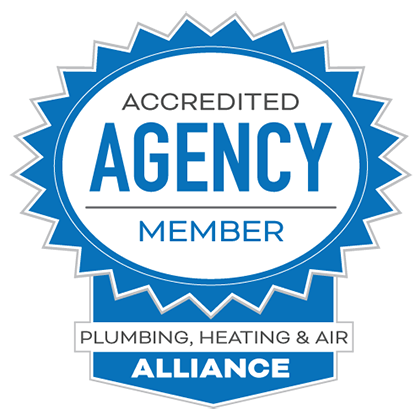What is an SEO Title Tag?
A title tag is a segment of HTML code that signifies the title of a webpage. Titles appear as the clickable portion of a search result on search engine results pages (SERPs). Therefore, it is optimal to keep its length to 60 characters to ensure proper display on SERPs.

SEO Titles for HVAC Contractors
The top-ranking heating & cooling websites implement best practices for title tags. After all, it’s the first impression of your web page to both Google and its users. Because Google aims to display the most relevant results for a given search query, it’s imperative to take the task seriously. The title must accurately represent the content on the page, and as was noted earlier, stay within the 60 character limit. Title tags between 50-60 characters display excellently on the vast majority of search results. Having the appropriate keywords within the tag itself is also critical. For users to see your page, high-volume keywords must exist within the title. In summary, SEO titles are essential for HVAC websites because of these reasons:
- Display: They serve as the clickable portion of your search result
- Relevance: They signify the topic and subject matter of your page (when done correctly)
- Visibility: The prompt Google (along with other factors) to show your result on SERPs
Title Tag Examples for HVAC Websites
The precision with which you should write your title will vary based on the qualities of your company. For example, well-established services in a central metropolitan area can approach titles slightly differently than a brand new company in a small town. Why? Because well-established websites have more tenure, which generally comes with more inbound links, more reviews on their Google My Business page, and more trust from Google and its local users. Take a look at some title tag examples below:
Good Title Tag (Established): Air Conditioner Repair in Dallas, TX | HVAC Service
Good Title Tag (Brand New): Emergency Air Conditioner Repair in Dallas, TX
Bad Title Tag (Established): Best AC Repair in Dallas, Fort Worth, Arlington | Cheap AC Repair
Bad Title Tag (Brand New): “Company Name”
There are several things to unpack in the examples above. First, an established company needs fewer modifiers or ancillary words. Why? Because they have a greater chance of ranking for the highest volume keywords, which happen to be shorter in most cases. Air conditioner repair, for example, has a much higher volume than emergency air conditioner repair. But a brand new company should utilize the latter because that’s all they can rank for right now. As for lousy title tags, they usually stem from keyword stuffing (including city/location stuffing) or a lack of clarity (using your company name only & not your industry).
Sub Page Title Tags for SEO
The home page title is most often referenced in tutorials, but secondary pages need their unique titles. For example, while your homepage might go for air conditioner repair or heating & cooling services, an interior page for something like geothermal heating will go for its main topic. While geothermal heating is not long enough for an optimal title tag, you can add your company brand after a pipe bar “|” so that users know the company that is promoting this service. An example of an excellent subpage title tag for SEO would be:
Geothermal Heating Services in Dallas, TX | Company Name
Apply the same process to each secondary page (subpage) and, of course, vary by the topic and main keyword. It’s prudent to always add the location of your HVAC company to the secondary title tags. Newer brands rely on SEO for page ranking, but it is still critical for established brands as well, as they want to fend off competitors who are doing “the little things” to close the gap. Other factors are considered, of course, including the quality of the content on the page itself.
Aligning Title Tags With Header Tags
Header tags often referred to as H1s, H2s, and H3s, are also important on-page SEO ranking factors. Your headers, especially H1s, should align with your titles but should not be a mirror image of them. You don’t want to duplicate your title tag as the H1, but you do want it to say essentially the same thing. The H1 should be shorter than the title, and in many cases, should NOT utilize the city name as the title does. There are some exceptions to this strategy, but overuse of city names within header tags can be perceived as spam by the user. Review how to align the two elements below:
- Title: Air Conditioner Repair in Dallas, TX | HVAC Service
- Header: Air Conditioner Repair
H1s are the most valuable header tags from an SEO standpoint but don’t underestimate the value of H2s either. As for H3s are less significant but can still be helpful from a format and structure perspective. Remember, the intention of SEO is not only to achieve a higher ranking through refinement but also through user engagement. If you can provide structured content that engages the reader and keeps them on your website longer, your website signals essential metrics that can increase its ranking. Google’s allegiance is to its users, as it should be.

On-Page SEO from HVAC Webmasters
If this all sounds too tenuous for you to handle independently, you can invest in on-page SEO services from HVAC Webmasters. You can also check out our other resources in the meantime. As a digital marketing company specializing in promoting HVAC contractors, we possess unique insights into search engine optimization for companies like yours. Our team is small (15 people) but diversely talented and has collective skills that range from custom website design to Google Maps optimization.
Podcast: Play in new window | Download





